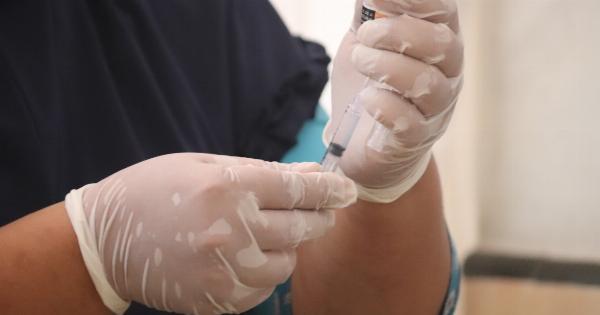Meniscus injuries are common among athletes, particularly those involved in sports that require frequent pivoting or sudden changes in direction. The meniscus is a rubbery, C-shaped disc that cushions the knee joint.
It acts as a shock absorber and helps to distribute the weight evenly across the joint. Unfortunately, the meniscus is prone to tears, which can cause pain, instability, and limited range of motion. In this article, we will explore effective treatments for meniscus injuries.
1. Conservative Treatments
If you have a minor meniscus injury, your doctor may recommend conservative treatments such as:.
- Rest: Taking a break from activities that exacerbate the pain and avoiding putting too much weight on the injured knee.
- Ice: Applying ice packs to the affected area for 15-20 minutes every few hours can help reduce swelling and relieve pain.
- Compression: Using an elastic bandage or a knee brace can provide support and reduce swelling.
- Elevation: Elevating the injured knee above the heart level can help minimize swelling.
- Physical Therapy: A structured exercise program can strengthen the muscles around the knee joint, improving stability and reducing strain on the meniscus.
2. Medications
In some cases, medication may be suggested to manage pain and inflammation associated with meniscus injuries:.
- Nonsteroidal Anti-inflammatory Drugs (NSAIDs): Over-the-counter NSAIDs like ibuprofen or naproxen can help reduce pain and inflammation.
- Corticosteroid Injections: For more severe pain and swelling, your doctor may recommend injecting corticosteroids directly into the knee joint.
3. Minimally Invasive Procedures
If conservative treatments fail to provide relief, your doctor may suggest minimally invasive procedures to repair or remove the torn portion of the meniscus:.
- Arthroscopy: This procedure involves inserting a tiny camera (arthroscope) into the knee joint to visualize and repair the tear.
- Meniscus Repair: If the tear is in the outer part of the meniscus and has good blood supply, your doctor may be able to stitch the torn edges together.
- Meniscectomy: If the tear is in the inner portion of the meniscus or if the meniscus cannot be repaired, your doctor may remove the torn portion.
4. Rehabilitation
Rehabilitation plays a crucial role in restoring strength, mobility, and function after meniscus injury and surgery:.
- Physical Therapy: A structured rehabilitation program will focus on strengthening the surrounding muscles, improving range of motion, and gradually returning to normal activities.
- Bracing: Depending on the severity of the injury and the chosen treatment, your doctor may recommend a knee brace to provide support during the recovery period.
5. Platelet-Rich Plasma (PRP) Therapy
PRP therapy is a regenerative treatment that can accelerate the healing process of meniscus injuries.
It involves injecting a concentrated solution of the patient’s own platelets into the injured area, promoting tissue repair and reducing pain and inflammation.
6. Stem Cell Therapy
Stem cell therapy is another regenerative treatment that is showing promise in repairing meniscus injuries. Stem cells have the potential to differentiate into various types of cells, including those found in the meniscus.
Injection of stem cells into the injured area can stimulate the body’s natural healing mechanisms and promote tissue regeneration.
7. Surgical Meniscus Transplantation
In cases where the meniscus is entirely removed, surgical meniscus transplantation may be considered. This procedure involves replacing the missing meniscus with a donor graft, either from a cadaver or a synthetic material.
Meniscus transplantation aims to restore knee stability and reduce the risk of long-term joint degeneration.
8. Factors Influencing Treatment Choice
Several factors influence the choice of treatment for meniscus injuries, including:.
- The type, location, and severity of the tear.
- The patient’s age, activity level, and overall health.
- Presence of other knee injuries or conditions.
- The presence of adequate blood supply to the injured meniscus.
9. Post-Treatment Care and Prevention
After undergoing any treatment for a meniscus injury, it is essential to follow post-treatment care guidelines and take steps to prevent future injuries. Some measures include:.
- Gradually returning to physical activities and sports.
- Using proper techniques and protective equipment during sports or other physical activities.
- Maintaining a healthy weight to minimize stress on the knee joint.
- Engaging in regular strength and flexibility exercises to keep the knee joint strong and stable.
Conclusion
Meniscus injuries can significantly impact daily activities and sports participation. However, with the right treatment approach, many individuals can make a full recovery and resume their normal lives.
The choice of treatment depends on various factors and should be determined in consultation with a medical professional. Whether through conservative measures, minimally invasive procedures, or regenerative therapies, effective treatment options are available to help individuals recover from meniscus injuries.






























